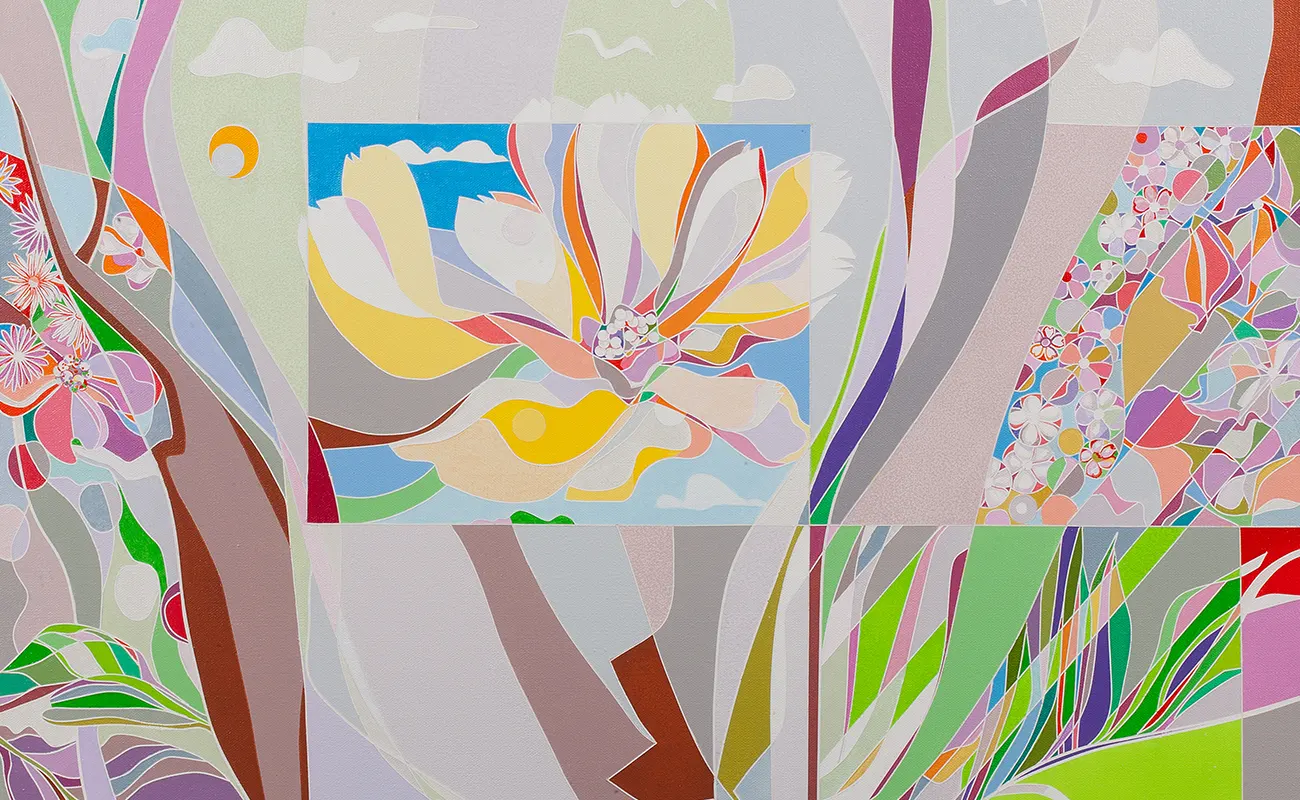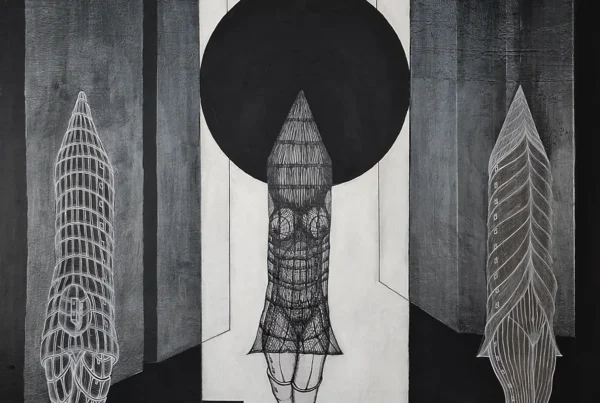“Be strong in ethics; your works mirror you.”
Navigating Through a Culturally Rich Artistic Journey
Embarking on a journey from the dynamic environs of Hong Kong to the culturally rich Washington DC Metro Area, Ai-Wen Wu Kratz navigated her childhood amidst the energetic and densely populated urban landscapes that defined her early years. Nestled within a high-rise apartment, the genesis of her talent for navigating through bustling environments and her inherent sense of community wellness was evidently fostered. Although Wu-Kratz’s maternal family was not rooted in professional artistic endeavors, they cherished calligraphy and Chinese ink paintings, juxtaposed with her paternal uncle, Wu Zi-Fu, who earned accolades as a distinguished calligrapher in China’s Guangdong Province. Early recognition of her adept drawing skills, notably in rendering hands, navigated her towards private watercolor painting lessons, which initially leaned towards emulating subject matter.
Two potent memories seed Wu-Kratz’s inspiration to delve deeper into the artistic world: one, a captivation with the etchings and engravings of old masters on calendars that decorated her Hong Kong home, and second, an inspiring initial encounter with an art exhibition in Hong Kong. This exhibition, displaying works by seasoned artists and curated by her watercolor painting mentor, left an indelible imprint of awe on her nascent artist’s soul. The latter fostered not only an appreciation for artistic expression but also kindled a spark that would later ignite her commitment to the arts.
In the U.S., her educational odyssey introduced her to an expanded horizon of creativity, concretizing her resolve to immerse herself into the world of painting. This resolution found a nurturing ally in her father, whose words espoused both an ethical and artistic guidepost: “Be strong in ethics; your works mirror you.” Her subsequent works, imbued with an ethical and aesthetic reflection of her persona, continue to reveal the intricate tapestry of her journey, gracefully weaving her rich heritage with her contemporary experiences and discoveries.

Ai-Wen Wu Kratz: Harmonizing Diverse Elements into Abstract Narratives
Ai-Wen Wu Kratz has long harbored a curiosity that seeks to intertwine distinct artistic elements into a harmonious composition. In the nascent stages of her career, the artist deeply explored themes closely knit with music and dance, embodying a dynamic intertwining of movement and static imagery that was simultaneously captivating and thought-provoking. Since 2003, however, Wu-Kratz has navigated through a nuanced shift, leaning into the magnetic allure of abstraction and, at times, experimenting with shaped canvases. Noteworthy pieces from this evocative period, such as “From the Elysium” and “Renewal,” were materialized utilizing acrylic on canvas, capturing both the evolution of her style and the steadfastness of her technique.

In the sanctity of her workspace, large wall spaces serve not merely as physical entities but as expansive canvases that facilitate the unwinding of her creative threads. Ai-Wen’s ability to manage distractions with an unparalleled ease could be attributed, in part, to her upbringing in the bustling environment of Hong Kong, where she honed her ability to sail smoothly through a sea of noise and motion. Furthermore, the artist has developed an adeptness at efficiently multi-tasking, ensuring that her creative process remains undeterred amidst potential perturbations.
As the melodies of classical music or the narrated words from books via Librivox permeate her studio, they weave into Ai-Wen Wu Kratz’s artistic narrative, seamlessly becoming part of the auditory tapestry that accompanies her through the creative journey. Her ability to meld various forms and themes into cohesively rich visual stories stands as a testament to a career that has not only witnessed the amalgamation of abstract and figurative elements but has also thrived amidst the dynamic tapestry of change and evolution.

A Confluence of Personal and Broader Inspirations in Art
Ai-Wen Wu Kratz finds resonance in the oeuvres of notable figures within and beyond the sphere of visual arts. The expressiveness of Picasso, the inventive spirit of David Hockney, and the poignant works of Jacob Lawrence have shaped her aesthetic sensibilities, weaving a complex web of stylistic echoes throughout her portfolio. Wu-Kratz, however, does not only tether her inspiration to fellow artists; she casts her net wider, ensnaring nuances from varied domains such as nature, literature, music, stage design, dance, vocal arts, and even the expert accomplishments in scientific fields like Physics.
Wu-Kratz’s artwork often serves as a conduit through which profound personal meanings are communicated and explored. Take, for instance, “To Plant Flowers While Waiting,” an acrylic canvas piece that seamlessly intertwines reflections on Samuel Beckett’s ‘Waiting for Godot’ with an allegorical message espousing acceptance, constructivism, and productivity. It does more than merely visualize a concept; it invites viewers into a narrative shaped by literary introspection and optimistic ideology, presenting a dual lens through which to observe and interpret the art.
In another illustrative piece, “The Gift of Life,” Wu-Kratz delves into the personal, honoring her husband’s birth mother, Hildegard Alberta Johanna Marie Krueger, through an abstract expression that narrates life’s stories and embodies a nurturing character. She orchestrates a symphony of elements – nature, florals, and metaphoric compositions, offering not just a visual spectacle but an emotionally charged expedition into familial stories and inherited legacies. In these ways, Ai-Wen crafts a multifaceted dialog between art, personal narrative, and broader thematic concepts, engaging viewers in a vibrant, exploratory exchange.

The Symbiosis of Acrylics and Ambition in Ai-Wen Wu Kratz ’s Universe
In the dynamic universe of Ai-Wen Wu Kratz, acrylic paint has steadfastly claimed its dominion since 2003, becoming an integral aspect of her artistic methodology. This preference is not arbitrary; it is delicately interwoven with the artist’s evolving spatial context and a nuanced understanding of material properties. The transition from utilizing oil paints within the expansive confines of rented studio spaces to adopting the versatile and expedient acrylics was significantly influenced by her move to a home studio. The characteristics of acrylics – particularly their water-based composition and rapid drying time – seamlessly integrated into Wu-Kratz’s work and painting style, revealing a symbiotic relationship between medium and creator.
Engaging in a perpetual dialogue with inspiration and artistic ambition, Wu-Kratz has nurtured a particular project idea that is both ambitious and reflective of her expansive creative vision. Envisioning a triptych, each painting would measure a commanding 6 ft x 4 ft, aspiring to weave a complex narrative through varied patterns and elements across the panels. Random stripes intertwine with subtle free forms achieved via meticulous airbrushing, and vertical stripes clandestinely unveil dancers within their confines. The concept, which germinated from an encounter with a woman during her travels, symbolizes not merely an idea awaiting realization but also embodies the perpetual and evolutionary journey of an artist.
Intriguingly, this yet-to-materialize concept has recently been rejuvenated, revealing a timeless aspect of Wu-Kratz’s artistic endeavors that perpetually oscillate between conception and manifestation. It stands as a testament to her relentless pursuit and evolving trajectory in the arts, promising a fusion of past inspiration with future expression, thereby enriching the ongoing narrative of her creative journey. The anticipation of this concept becoming a tangible reality not only excites the viewer but also underscores the artist’s continual dialogue with possibility and transformation within her practice.






